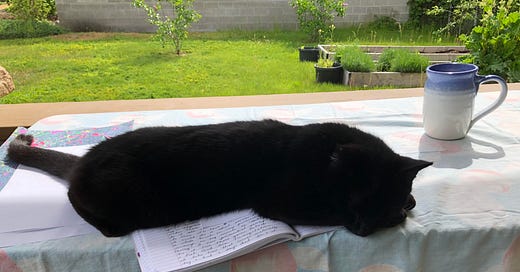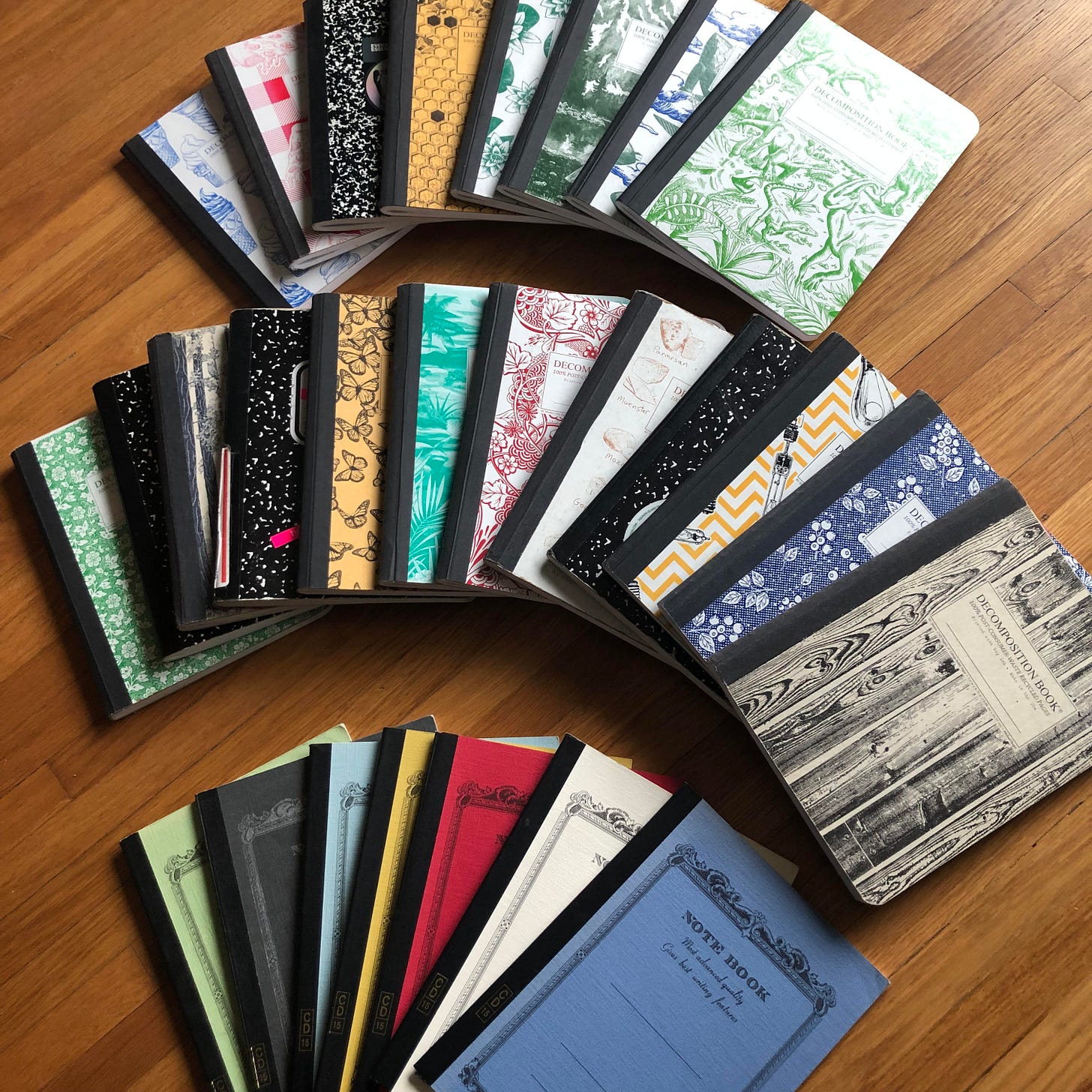Last week I spent several hours reviewing all the notes from the second year of my MFA, and transcribing the ones I wanted to remember and refer back to. I share them here in the order they were retrieved from my notebook. I can’t attribute every note individually. Surely some of them came through by way of other authors and teachers. But I will credit everyone whose knowledge is noted here: EWU professors Greg Spatz, Sam Ligon, and Polly Buckingham. Visiting writers Morgan Talty, Ashley Wurzbacher, Arna Hemenway, Dana Johnson, Megan Cummins, and Sindya Bhanu. A panel at AWP 2023 in Seattle on writing queer historical fiction. Here are the most valuable tips from the second year of my MFA, in 450 words:
Terminal modification – switch up yr structural pattern at the end of a story/novel to notify that you’re coming to an end.
Em dashes refuse to prioritize details.
What does a character want that another character has?
Explore a “strange phase” of life. Ask: who can I bring in to make things boil over?
Convert backstory into a second storyline.
Characters make and break connections in an escalating pattern > reconfigure > break again
The end of a story controls/revises the meaning of what has come already
Specific characteristics make a character identifiable – how does this character do “the thing” differently?
Look for places that keep the reader at a distance from experience
Watch for interior interpretations to match the age/wisdom of a character, aligned with the narrative distance of the telling.
Efficient character development > see character under duress. What would make them the most uncomfortable?
Don’t interrupt the dream of the story.
No convenient absences: make it complicated, confrontational.
Don’t mix up theme and conflict.
Conflict = theme embodied in action
Setting = physical manifestation of something bigger than the character
Theme = abstract manifestation of the same
Switching POV may be an evasion, rather than going into what is challenging to write.
Stay one step ahead of the reader > keep them hypnotized.
Transitional movements (from one space to another) are opportunities for transformation.
Get characters in the worst kinds of trouble.
Fill the temporal frame until it explodes.
Don’t bail on your most dramatic scenes. Get closer, go slower.
Trust the reader to enjoy the mystery of not knowing. This goes against other advice to reveal what you know rather than withholding and creating false tension.
The story will tell you how much backstory to use.
Historical fiction requires an accuracy of affect that resonates today.
Don’t place what you want to be true into the past. Ask:
What is my intervention and how am I subverting expectations?
How do my characters know what they know?
Yr whole job as a writer is to describe things > challenge assumptions about the world.
Dialogue should be tonally different from narration.
When writing character relationships, identify how each scene changes or develops the relationship. Make sure never to repeat the purpose of a scene.
Repeated images or color can be a powerful tool to progress a narrative. Track the movement of an object.
The relationship of binaries drives fiction forward – energy comes from contrast and contradiction.
Subject matters: regional, marginalized, obsessions in terms of topic, recurrent images/types of stories, vision/worldview (kind or harsh to characters).
What am I obsessed with, what images do I return to, what feels natural vs. unnatural to try.







these are juicyyyyyyyyyyyy! But I'm curious about this one: Em dashes refuse to prioritize details. Was this in reference to a specific writer / text?